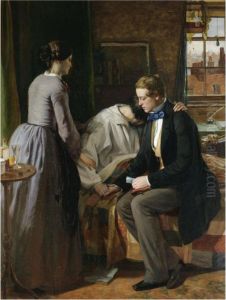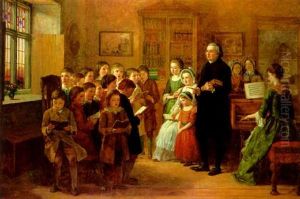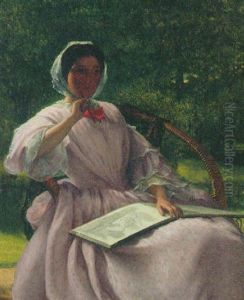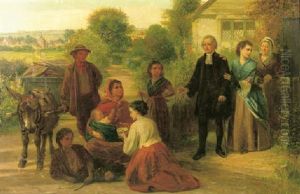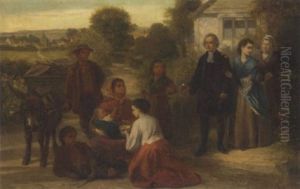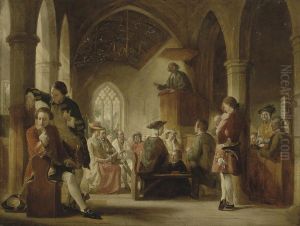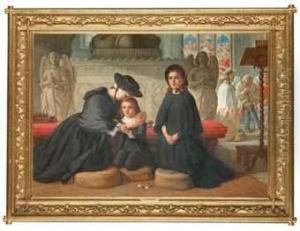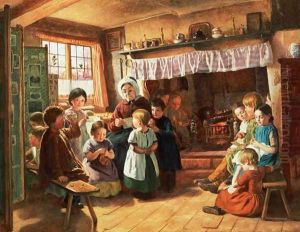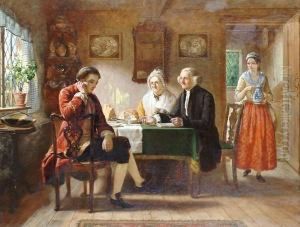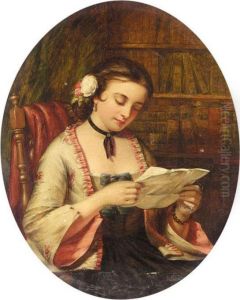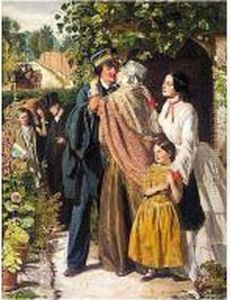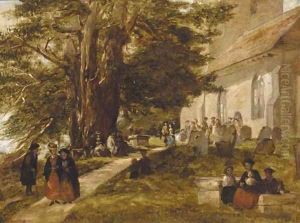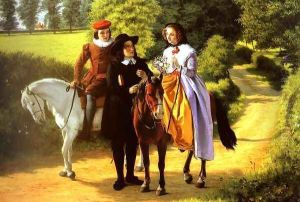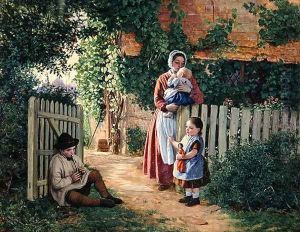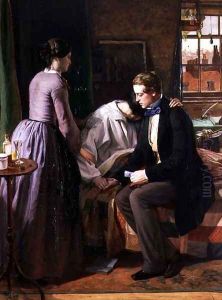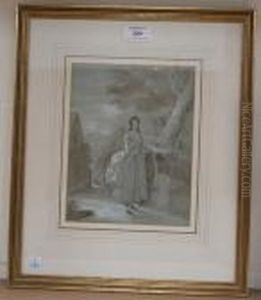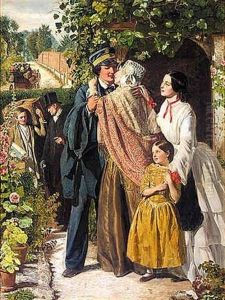Alfred Rankley Paintings
Alfred Rankley was a notable British artist, recognized for his contributions to Victorian art, particularly in the realms of painting and engraving. Born in 1824, he embarked on his artistic career during a period when the British art scene was undergoing significant transformations, influenced by Romanticism and later by the Pre-Raphaelite Brotherhood, although Rankley's work retained a distinctive character that set it apart from these movements.
Rankley's oeuvre primarily consisted of landscapes and historical scenes, imbued with a meticulous attention to detail and a profound sense of realism. This realism was not just in the physical accuracy but also in capturing the essence and emotions of his subjects. His landscapes were celebrated for their ability to convey the sublime beauty of the natural world, while his historical paintings often depicted moments of dramatic intensity, reflective of his deep interest in history and literature.
Educated at the Royal Academy Schools, Rankley was part of the vibrant artistic community in London. Despite the prominence of the Academy in his training, he was known to have had a somewhat ambivalent relationship with the institution throughout his career. This ambivalence did not hinder his recognition, however, as his work was exhibited at the Royal Academy and other prestigious venues, earning him acclaim.
Rankley's artistic legacy is somewhat overshadowed by his more famous contemporaries, a fate not uncommon among Victorian artists. However, his contributions to British art have been reassessed in recent years, with scholars and collectors alike showing renewed interest in his work. His paintings, characterized by their technical skill and emotive power, continue to be appreciated for their beauty and historical value.
Alfred Rankley's life was cut short when he died in 1872, at the age of 48. Despite his relatively brief career, he left behind a body of work that remains a testament to his skill and dedication to the arts. Today, Rankley's paintings can be found in various collections, both public and private, serving as enduring examples of Victorian artistry.
